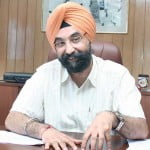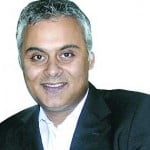
Out of its design studio in Bengaluru, GE India for the past several years has been building a suite of innovative solutions. Affordable equipment in healthcare and in power, engineering solutions in infrastructure development and innovative features in entertainment devices – these are just a few examples of the work emerging from the studio. Of late however, eCube, the name the studio goes by has turned out to be more than an outpost that makes in India, for Indian customers. It has become a giant backroom for the American company’s innovations and is fast becoming one of the many engines powering the company’s global brand.
The products developed and designed and, in some cases, also made in India are being marketed all over the world. Thus what started out as an initiative to align itself more closely with the Indian markets is now helping the company build its identity as a company that is not just an American icon but also one that is in step with the needs of new age economies.
Consider for instance ACT, a computed tomography system (it is like a CT scanner) developed at eCube. It is 40 per cent more affordable than older systems and uses 47 per cent less energy. GE said it is taking its made-in-India ACTs to other countries in S.E. Asia and as it says on its website, “co-creating relevant technologies in India for India can lead to increased affordability and adoption to deliver quality healthcare everywhere”.
It is a similar logic that has led to the marketing of a wind turbine, developed in India that generates power at low wind speeds and Lullaby infant warmers that have helped save lives of infants, in remote corners of the world. “We have adapted ourselves to a changing world where emerging economies are playing a larger role in innovation,” says Munesh Makhija, Vice President, GE India Technology Centre.
For years GE built products such as wind turbines or an ultrasound machine for developed markets or, as it is known in marketing parlance, for the first billion customers. Thus its solutions and products were aimed at the problems of the first world and priced accordingly. Today, GE is letting emerging markets lead it into the newer developing regions of the world by helping identify problems that are unique to their stage of growth and offering solutions that are more affordable. In the healthcare devices space, GE has a portfolio of 26 affordable products that are developed and manufactured in India and now sold in over 100 countries. Like GE’s ACT, the device is the result of four years of research and development efforts by a team of 75 researchers and engineers who worked with over 500 healthcare providers in urban as well as rural regions.
GE is among the pioneers of reverse innovation in technology solutions and processes, says Makhija. Like the baby warmers from the Lullaby suite of infant care products; 70 per cent more affordable than conventional machines, these warmers consume half the power that regular machines do. GE’s wind turbine is another example; it can work at low wind speeds of around 27km per hour, developed at the design studio it is made in Pune and sold in US, Brazil, EU and China, apart from India.
GE is not the only multinational in the health space which is taking designed for India products globally. Global rival Philips has a team in India that builds products for local use, which is now exploring taking it globally. Philips, a consumer electronics company that also has a health tech unit runs its Innovation Campus in Bengaluru; it is the largest site for software solutions in the company. Philips has identified India as the global surgery hub, building products for local market as well as taking it globally.
The company’s IntelliSpace Consultative Critical Care (ICCC) system allows the monitoring of multiple intensive care units from a central command center. The solution enables the establishment of a ‘hub-and-spoke’ model where the central command centre acts as the hub and the peripheral ICUs are the spokes. “Philips did have an eICU solution in the US which wasn’t relevant to India. The team at PIC has developed the solution from bottom up with 70 per cent functionality of the US product that was required by Indian customers,” said Srinivas Prasad, CEO Philips Innovation Campus.
For organisations such as Philips and GE, keeping their brands relevant in a digitally empowered and globalised world which is centred on the needs of Asian and African countries is going to be a big challenge. And it is here that their operations in India could come in handy, providing innovative, affordable products and solutions that are more relevant to the growing tribe of consumers in Asia and Africa and even in the US.
[“source -business-standard”]




